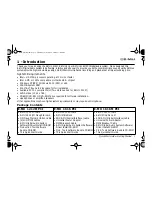
ATM Glossary
24
A device that sets up a virtual circuit and forwards cells. Switches act like routers while setting up virtual
circuits; that is, they determine the best path for the cells to take. Once the virtual circuit has been setup, they
act as bridges, simply forwarding cells.
SWITCHED VIRTUAL CIRCUITS (SVCS)
Virtual circuits that ATM end stations establish on-demand, when they need to communicate. Different types
of SVC's exist for different amounts of time.
UNSPECIFIED BIT RATE (UBR)
An ATM service category that is used for data traffic such as TCP/IP, which can tolerate delays. UBR does
not reserve any bandwidth for a connection.
USER-TO-NETWORK INTERFACE (UNI)
The ATM Forum standard that defines the interface between an end station and a switch on an ATM network.
Also, a generic term used to describe the interface between an end station and a switch on a switched network.
VARIABLE BIT RATE (VBR)
An ATM service category that is used for time-sensitive traffic such as frame relay. Like CBR, VBR reserves
a certain amount of bandwidth for the connection. Unlike CBR, VBR can tolerate delays.
VIRTUAL CIRCUIT (VC)
The connection between two ATM end stations for the duration of the connection.
VIRTUAL SUBNET
A logical LAN made up of end stations on more than one ATM-connected LAN, communicating as if they
were located on the same physical LAN

































